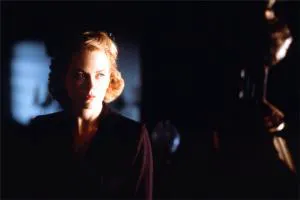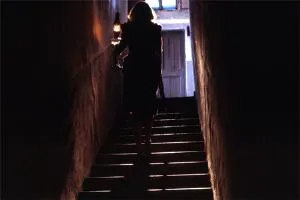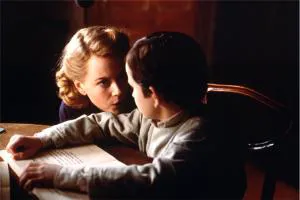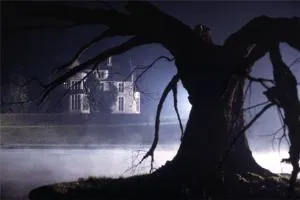
Alejandro Amenábar elevates a fairly ordinary, second-rate haunted house plot with first-rate execution. He employs timeless retro aesthetics, solid English traditions, and a high-profile star. The story unfolds in post-war 1947 on the British island of Jersey, in a house filled with oak furniture and stucco moldings. The grounds feature manicured gardens and dense fog, while Kidman embodies a slender, dyed blonde with shoulder pads and vibrant lipstick, reminiscent of Barbara Stanwyck in “Sorry, Wrong Number” (1947). The unhurried, epic pacing and subdued atmosphere of impeccable taste all contribute to a profundity that appeals to the audience. This appeal is further enhanced by the irony that oak panels and heavy drapes, symbols of a high-class lifestyle, inevitably create in relation to any mysticism as something inherently vulgar.

The Unfading Second-Rate Nature
Unfortunately, the carefully concealed second-rate nature never truly disappears. Firstly, the premise of a solitary widow with two children living in a remote estate, abandoned by servants but filled with hushed whispers that grow louder with the arrival of new staff, is a classic horror trope, entirely predictable in its outcome. The widow’s Catholic upbringing evokes no particular associations, as the reformation of Catholicism, far deeper than “limbo” and “unbaptized infants,” began long before 1947. Amenábar essentially argues only with Dante’s fantasies, but Dante was not a Father of the Church. Secondly, the ending becomes clear within the first half-hour, yet the rustling continues for a good hour and a half. The constant attempts to mislead the audience are too obvious, and in the context of “building suspense” until the very end, the irony of the first-rate filmmaking turns into snobbery.

The Problem with Quiet Horror
Sure, a door creaks where no one should be. But in real life, a normal person would either oil the hinges or have a heart-to-heart with the ghost. Here, the creak is on the screen, and next to it is the audience. All that’s left is to sit in unison and wait for something to happen, and to start being afraid. Quiet horror is an absolutely cheap genre, just like bloody horror. They justify fear by making it collective, justifying people who are afraid their whole lives instead of living. Vampire movies also provide a collective outlet – for example, the desire for self-affirmation at the expense of a bitten neighbor, characteristic of many marginalized members of society. But pop culture doesn’t mix well with intellect.

Unrealized Potential
At the same time, “The Others,” sadly, could have had quite high intellectual potential if it had completely abandoned fear, the notorious “suspense,” the pointless locking of all doors and drawing of all curtains, simply because the widow’s children, you see, have a “deadly allergy to light.” There’s nothing behind it, and the stylish, fundamental filming provided an opportunity to understand much about the life of ghosts as it is. It is enough to recall the episodes with her husband, with the boy Victor, without revealing the ending, with the nasty character of her daughter Anne.

A Different Perspective on Ghosts
The film could have explored the idea that ghosts are, in fact, very intrusive. Their world, whatever it may be, lacks one thing: hope. That’s why they cling to the living, break through to them. Ghosts, who have nothing to lose, always claim the best spot in the house, your favorite cup, your favorite biscuit, your favorite pillow, and all your attention. Ghosts are irritable and irresponsible, they can lure you with sex and trip you up in passing. You should never trust them, because then they will immediately fulfill their purpose: to avenge the fact that they are not alive, and take away all the joy of life. Along with cups, biscuits and pillows. But if you still, contrary to any vindictiveness with intrusiveness, do not believe them and express it articulately, the ghosts immediately become as smooth as silk. Kind, affectionate, they thank you for everything and leave you alone. There is nothing scary about them.

The Cast and the Director’s Shortcomings
Nicole Kidman, Christopher Eccleston, Fionnula Flanagan, and the children, selected for the film from more than 5,000 applicants, all hint at this. But the director came up with too little about Kidman, Eccleston, Flanagan, and the children for them to become more important than “how it ends.”
In short, there were too few ghosts in his own life to make a whole movie.anova